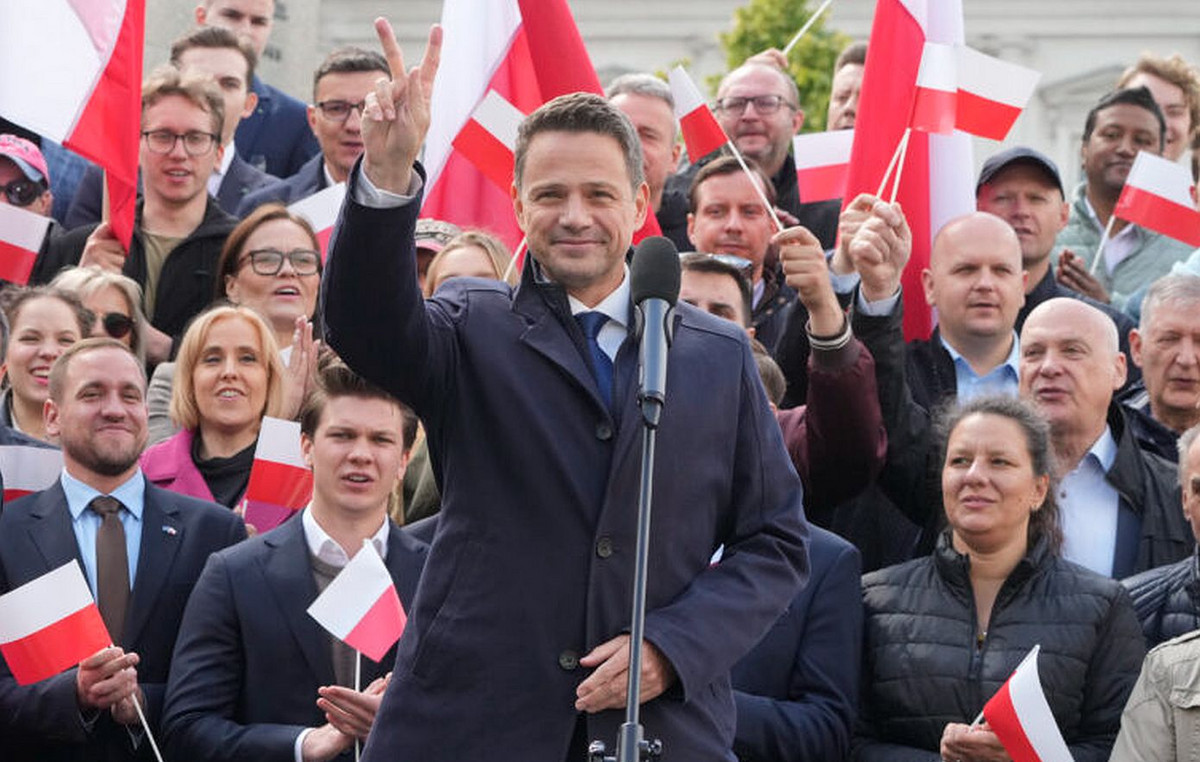Chanu Gupta has lived in India's financial capital, Mumbai, practically his entire life – since leaving the state of Uttar Pradesh, in the north of the country, as a child.
But when the polls arrive in the city for this year's national election, the 59-year-old street vendor will not be able to vote, as will millions of internal migrants who are the backbone of the country's economy.
“I can't vote because I wasn't born in the state of Maharashtra,” Gupta told CNN in Mumbai's Dadar shopping district, standing next to a street cart where he sells slushies and cold drinks. “I have no right to vote in other states.”

- Chanu Gupta sells scratch cards in Mumbai, India. / Noemi Cassanelli/CNN
Under Indian electoral law, voters can only go to the polls in their home states – meaning those who work in other regions need to return home to exercise their right to vote. This is impossible for many of those who leave their homeland to work, especially those who live informally and who depend on daily jobs. In India, this group is huge. One study estimates that there were around 600 million internal migrants in the country in 2020, which represented 43% of India's nearly 1.4 billion citizens at the time.
These workers often come from rural parts of India, looking for work in metropolitan areas. The salary is usually low and, even so, most of it goes to supporting family members. This phenomenon can be observed closely in Mumbai – the richest city in the country and where Bollywood, the Indian film industry, emerged.
Repeatedly called the “city of dreams”, Mumbai attracts migrants from all over the country seeking wealth and success.
In the last national census in 2011, more than 43% of Mumbai's population was classified as migrants, according to think tank Knomad. Many came from states with high poverty rates and high unemployment, such as Uttar Pradesh, Bihar, Rajasthan and Gujarat.
Hints of this diversity are everywhere in Mumbai – in the variety of languages spoken, the many informal workers who are paid by the day, the Tuk Tuk drivers, the civil industry workers and the sugarcane juice vendors who line the sidewalks.
For these workers, giving up their daily pay to go home has a high cost – both in transportation costs and in the loss of a day worked. The effect of these losses is especially severe on migrants who support their families – which can include failure to pay for school fees for children to defaulting on rent for elderly parents.
The Covid-19 pandemic highlighted the volatility of this type of work, when millions of Indians lost their jobs overnight and were forced to return home.
“Despite the high cost of living in large cities, wages are considerably low, which leads to precarious living conditions, including the absence of basic public services such as basic sanitation,” stated a study conducted by the United Nations that assessed the impact of the pandemic in this segment of the workforce.
Gupta said sales of scratch cards depend on hot summer days when the election is scheduled. “If I were to vote, I would lose my business. Making money is more important than voting since I have to support my family,” she stated. “Many migrants like me who are in Mumbai need to earn money and will not be able to return home to vote.”
Indian diaspora
Many Indians living abroad – and who are part of the large global Indian diaspora – face the same problem, although circumstances vary considerably.
Most are low-wage workers who helped build the economies and modern cities of oil-rich Arab nations. A smaller part is made up of young middle-class or wealthy students seeking professional and academic training in Western countries.
According to government estimates, there are 13.6 million “non-resident Indians”, or INRs, across the world. The largest group is in the UAE, with 3.4 million INR, followed by residents of Saudi Arabia, 2.5 million, and the United States, with 1.2 million.
The pandemic has also highlighted the precarious condition of INRs in Gulf nations – many crammed into collective dormitories or work camps. At the height of the crisis, when jobs dried up, the restrictions imposed prevented these workers from returning home, creating a limbo for millions of Indians.
For those who live on other continents, there is no possibility of voting online or by email. Instead, INRs must register as “non-resident voters” and then return to their hometown in India to attend the election in person and exercise their right to vote.
The local media exemplifies the citizenship of some dedicated voters who intend to return to the country to participate in the election. Among them, professionals in the United Kingdom and Dubai. But they are a small minority among non-resident Indians.
The Election Commission of India points out that in the last national election, in 2019, more than 71 thousand people registered as “non-resident voters” – less than 1% of the total number of Indians living outside the country.
Encouraging citizenship
Indian authorities have made an ongoing effort to increase participation in elections, appealing to the more than 968 million citizens eligible to vote – including setting up polling stations in remote forests and on mountain peaks.
The Electoral Commission also created electoral literacy initiatives and social media campaigns to impact young citizens.
The effort resulted in the highest popular participation in the country's history in the 2019 elections, when more than 67% of Indians went to the polls. The huge group of migrants prevented from voting contrasts with these achievements – and there is no prospect of improvement in the short term.
A 2011 study that surveyed workers in five Indian states showed that 60% of respondents had lost at least one election because they were away from home looking for work. Many of them left their homes at the age of 13, even before the age allowed to obtain a voter registration card, at 18.
The Electoral Commission acknowledged the problem in a 2022 report, raising the question of how to increase electoral participation among internal migrants.
A publication by the entity highlighted the absence of any clear definition of what it means to be an internal migrant, assessing that this is the main contribution “to the group's low electoral participation rate”.
The commission suggested that installing remote voting booths could solve the problem. But in 2013, the government stated that it did not intend to carry out the plan.
This means that, for now, the right to vote is a distant reality for many migrant workers.
“I can’t say who I would vote for,” said Gupta, the scratch-card seller from Mumbai. “It’s the last thing on my mind – my focus is on paying the bills.”
Source: CNN Brasil
Bruce Belcher is a seasoned author with over 5 years of experience in world news. He writes for online news websites and provides in-depth analysis on the world stock market. Bruce is known for his insightful perspectives and commitment to keeping the public informed.





